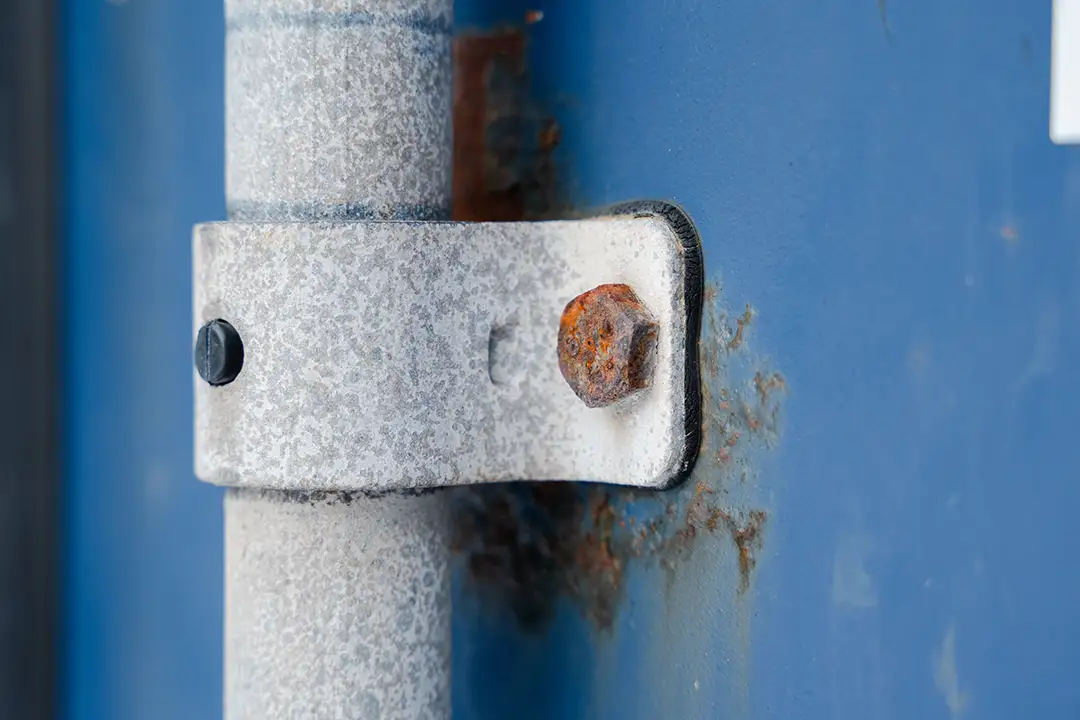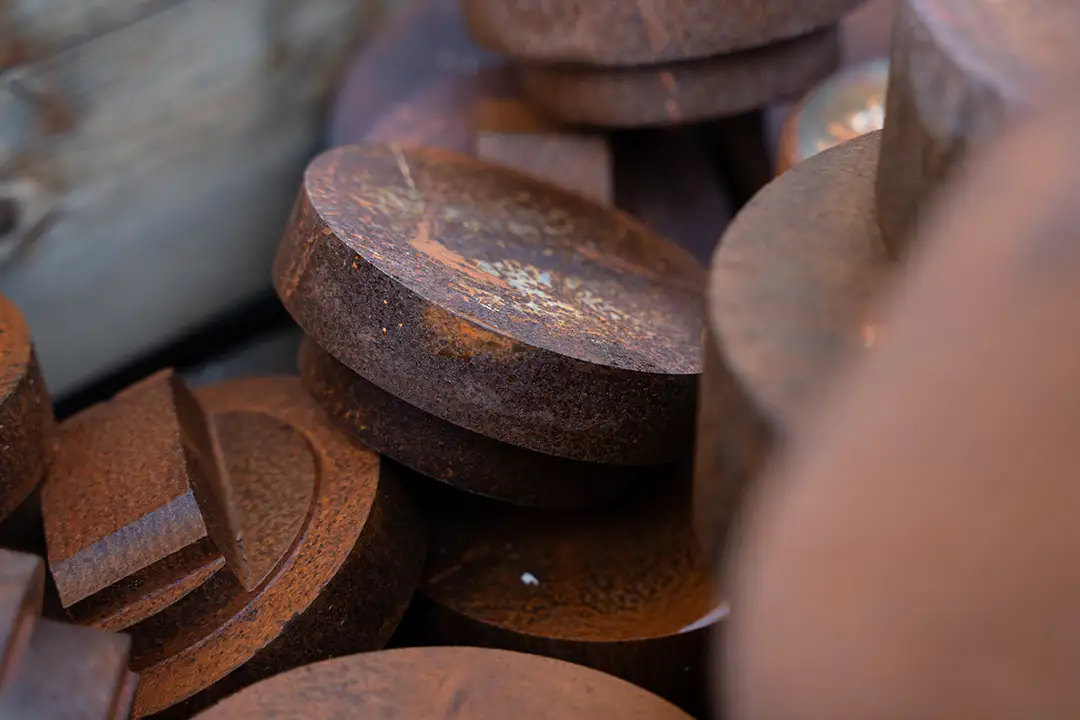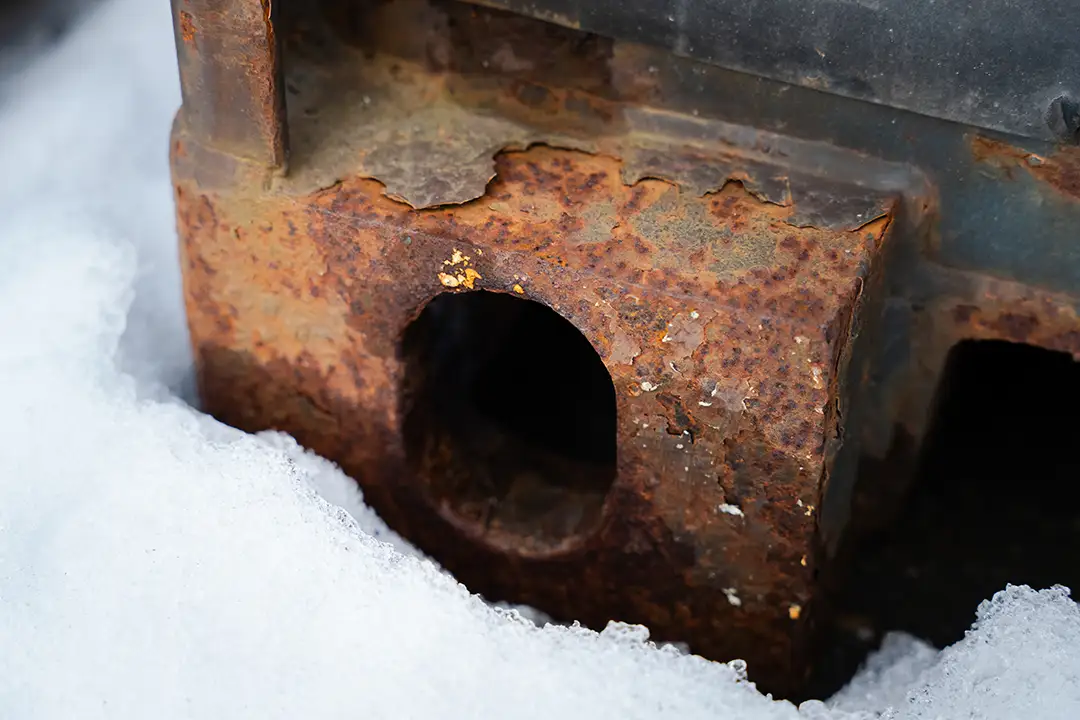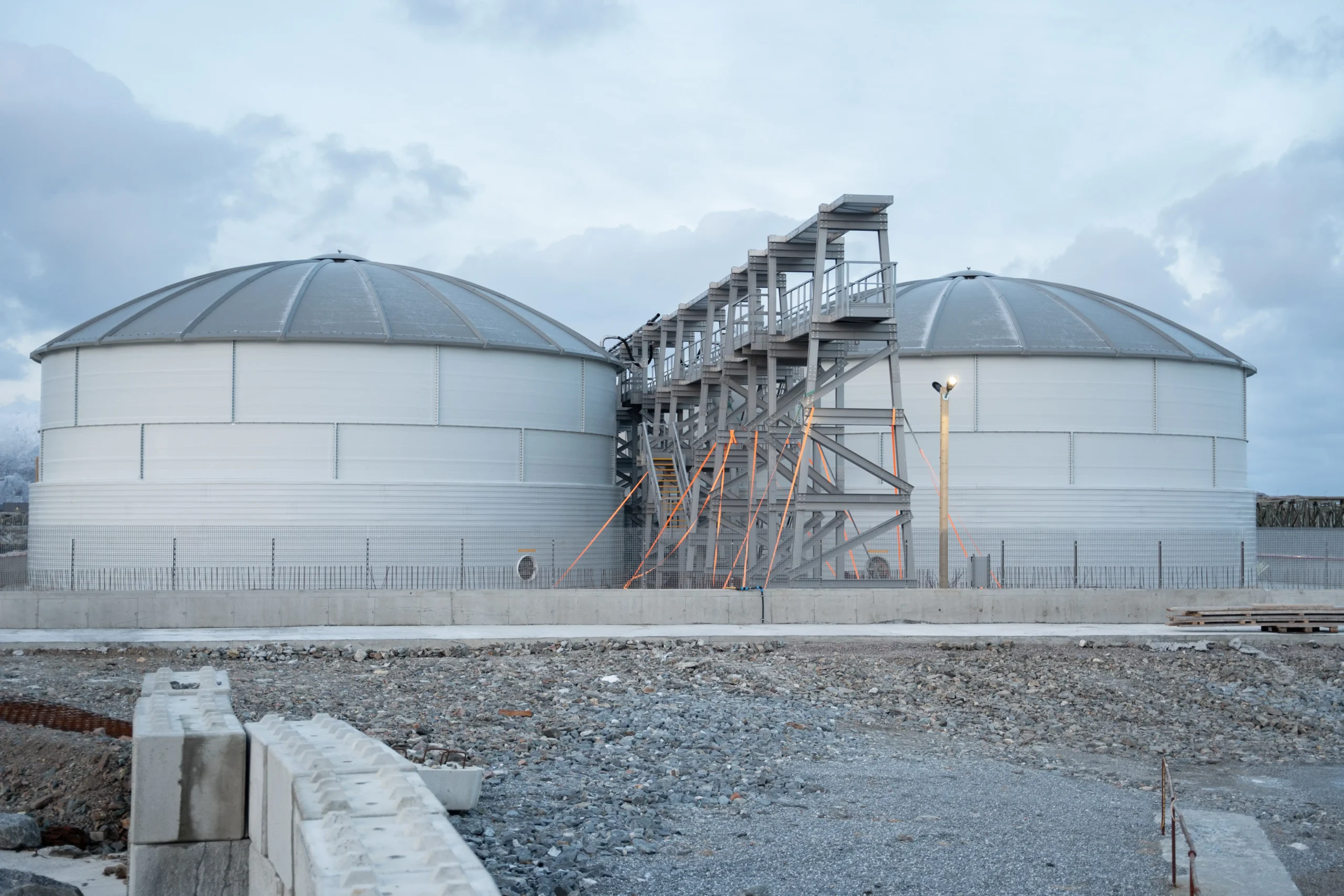Corrosion is a natural process that affects materials, primarily metals, leading to their deterioration over time. This not only impacts the structural integrity and lifespan of the materials, it also leads to substantial costs due to maintanance and repairs. Why does it happen and can we do anything to avoid it?
What is corrosion?
Simply put, corrosion is the degradation of materials through a reaction with their environment. In construction, these materials are often metals, which reacts with oxygen, water and other chemical elements, leading to the formation of oxides or other compounds. Oxygen is unavoidable, so the corrosion process is always ongoing if ever so slowely.
The unavoidable but sligth corrosion from oxygen is often not a big deal, but there are other factors that will accelerate corrosion significantly.
Water transforms the slow chemical reaction from oxygen into a rapid electrochemical one. The type of water plays a role too, be it moisture from the air, seawater, or water containing dissolved salts or acids.

The impact of environment on Corrosion
Environmental factors play a crucial role in determining the rate of corrosion. Materials exposed to a harsh climate will corrode at a higher pace.
Below is a list of corrosive enivronments ranked from least to most corrosive:
- Dry Air: Where oxygen alone can cause corrosion, but at a much slower pace.
- Humid Air: Moisture in the air accelerates corrosion.
- Saltwater: The presence of salts significantly increases corrosion rates.
- Industrial Environments: Where acids and chemicals are present, leading to highly corrosive conditions.
In addition, temperature is a critical factor. Higher temperatures increases the rate of chemical reactions invovled in corrosion. Even a slight rise in temperature can lead to an accelerated rate of corrosion.

Galvanic corrosion
Another consideration to think about regarding corrosion is galvanic corrosion. This occurs when two different types of metals touch each other in the presence of something wet, like water. This causes one of the metals to corrode faster than it would on its own. This is because each metal has its own ‘electrical potential,’ a natural tendency to either lose or gain electrons. When two metals with different potentials are connected in a wet environment, an electrical circuit is formed, and current flows from the metal with a higher tendency to lose electrons (anodic) to the one with a lower tendency to lose electrons (cathodic).
Understanding galvanic corrosion is crucial, especially in projects involving mixed metals exposed to moist environments. By evaluating the electrochemical relationships between different metals, we can design structures and systems that avoid galvanic corrosion, ensuring a long lifespan and structural integrity. Galvanic corrosion can also be bypassed using a non-corrosive material. For instance, placing a material such as rubber or plastic between two metals to isolate them and prevent any form of contact and thus reactions.
What can you do to avoid corrosion?
While it may seem daunting, there are effective strategies to mitigate corrosion and protect materials:
Material Selection
Choosing the right materials for the right environment is key. Corrosion-resistant alloys, stainless steel, and non-metallic alternatives like plastics and fiberglass offer excellent resistance in various corrosive environments. Fiberglass offers natural corrosion resistance as it is made of only non-corrosive componenents.
Protective Coatings
Applying protective coatings such as paint, platsic, or even another create a barrier that prevents corrosive elements from reaching the material surface.
Environmental Control
Controlling the environment around susceptible materials can greatly reduce corrosion. Avoiding a highly corrosive environment like one found near salt water can greatly increase the life span of nearby materials.
Regular Maintenance
Inspection and maintenance routines help identify early signs of corrosion, allowing for timely intervention before significant damage occurs.
Design Considerations
Designing structures and components with corrosion in mind can prevent issues before they start. This includes avoiding metal-to-metal contact and designing for easy water drainage.


What can you do to avoid corrosion?
Even though corrosion is a natural part of our environment, it is entirely possible to significantly reduce its impact with the right knowledge and strategies. By understanding the various factors that contribute to corrosion, we can implement effective preventative measures that not only protect our valuable materials and structures but also considerably extend their lifespan. This involves a thorough evaluation of the materials used, the environment they are exposed to, and the specific risks they face.
By choosing corrosion-resistant materials or protecting existing structures with coatings, cathodic protection anodes, or by designing with corrosion prevention in mind, we can avoid the costly consequences of corrosion. This includes not just the direct costs of repair and maintenance but also indirect costs such as loss of functionality and reduced safety.

Glassfiber Produkter AS on YouTube
We have also made a video about the same topic, check it out!
